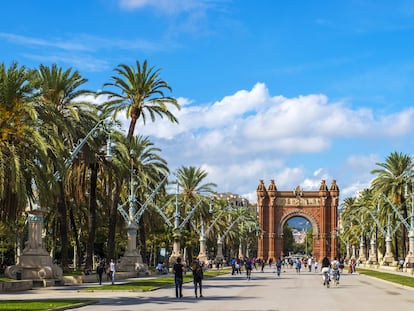Are smart cities really smart?
The ‘smart city’ is still a somewhat hazy concept, tasteless, almost, like a kind of half-sentence missing its verb

When concepts are repeated many times, they lose their meaning, eroding that otherwise close link between signifier and signified. When a concept is presented as the magic answer to a problem, it tends to inspire skepticism and distrust. When we offer solutions without understanding the problem, we’re probably going to be wrong.
At a time when everything has become ‘smart’ — homes, cars, phones... “even people,” as one professor sneered — smart cities sound more like a smokescreen that threatens to obscure the real problems that actual cities face. A bit like a “pyrolytic oven,” which, yes, is a catchy concept that sounds good, but you’re never quite sure what it means, even after you Google it.
Analyzing cities is complicated. Very complicated, in fact. Cities are an agglomeration of people, ideas, social interactions, businesses, economy, cars, smoke, noise, lives. Urban processes are difficult to understand, and we always, always have lingering questions and unexplained nuances, and thus, many unanswered questions as well (even if we also have a few certainties).
Moreover, cities have the great virtue of concentrating problems, so it’s not uncommon for quasi-magical solutions to proliferate, or to hear answers to questions that, in reality, we have not even managed to adequately formulate or pose. Partly for this reason, the smart city is still a somewhat hazy concept, tasteless, almost, like a kind of half-sentence missing its verb. To an extent, the smart city has become one of those empty, tautological concepts that define themselves by themselves, with reference to themselves, and so on ad infinitum (“a smart city is a city that offers intelligent solutions to its inhabitants”). Adorned, of course, with smart algorithms and smart energy-saving LED lights.
Smart cities sound futuristic, far removed from our daily lives, but always efficient (whatever that similarly hazy term, efficiency, means). Even for those of us who were not alive in 1962 and have no idea what Hanna-Barbera was, it sounds a bit like a setting from The Jetsons. A bit like the town of Springfield hailing the virtues of the monorail in The Simpsons.
Probably, part of the dissatisfaction with the concept has to do with expectations, and with a certain tendency we have, as a society, to propose solutions without having properly analyzed and diagnosed the problems they should seek to address. The smart city was supposed to be the innovative city, one that relied on information, communication technologies, and other technological means to improve people’s quality of life, the efficiency of services, and the competitiveness of societies. But it turns out we live in unlivable cities, cities dominated by traffic jams, gentrified cities, cities that expel people and lack accessible space.
The question, undoubtedly, is whether a city that discriminates or expels its inhabitants can ever be truly intelligent. How can a city that ignores the social be intelligent? Can a city that segregates be intelligent? And what about a city that discriminates or lacks physical accessibility? Then, to go a step further: Do dumb cities exist? Do stupid cities exist?
The point is that cities, in addition to accumulating their own problems, do not cease to manifest the problems of the society to which they correspond. For this reason, smart cities cannot be the magical, all-powerful solutions that will make inequality, traffic jams, pollution and your neighbor who wakes you up every night at 3 a.m. disappear. The smart city is a tool that, at best, can help us solve some of the problems that characterize today’s actually-existing cities. If they do it within a framework of efficiency and provide us with tools for evaluating solutions and problems, even better.
But, just as artificial intelligence (another big promise) has its light and dark sides, no matter how many algorithms and sensors we install, we will need to rethink what kind of society we want to live in, how we address problems, how we make cities livable, and how we develop appropriate public policy. Only then will we be able to rely on all the advanced technological tools at our disposal — to rely on computer science and, if necessary and useful, on the science of pyrolytic ovens.
Sign up for our weekly newsletter to get more English-language news coverage from EL PAÍS USA Edition
Tu suscripción se está usando en otro dispositivo
¿Quieres añadir otro usuario a tu suscripción?
Si continúas leyendo en este dispositivo, no se podrá leer en el otro.
FlechaTu suscripción se está usando en otro dispositivo y solo puedes acceder a EL PAÍS desde un dispositivo a la vez.
Si quieres compartir tu cuenta, cambia tu suscripción a la modalidad Premium, así podrás añadir otro usuario. Cada uno accederá con su propia cuenta de email, lo que os permitirá personalizar vuestra experiencia en EL PAÍS.
¿Tienes una suscripción de empresa? Accede aquí para contratar más cuentas.
En el caso de no saber quién está usando tu cuenta, te recomendamos cambiar tu contraseña aquí.
Si decides continuar compartiendo tu cuenta, este mensaje se mostrará en tu dispositivo y en el de la otra persona que está usando tu cuenta de forma indefinida, afectando a tu experiencia de lectura. Puedes consultar aquí los términos y condiciones de la suscripción digital.
More information
Últimas noticias
Most viewed
- Christian Louboutin: ‘Young people don’t want to be like their parents. And if their parents wear sneakers, they’re going to look for something else’
- ‘El Limones’ and the growing union disguise of Mexican organized crime
- Cartels in Mexico take a leap forward with narco-drones: ‘It is criminal groups that are leading the innovation race’
- ‘We are dying’: Cuba sinks into a health crisis amid medicine shortages and misdiagnosis
- The low-cost creative revolution: How technology is making art accessible to everyone










































